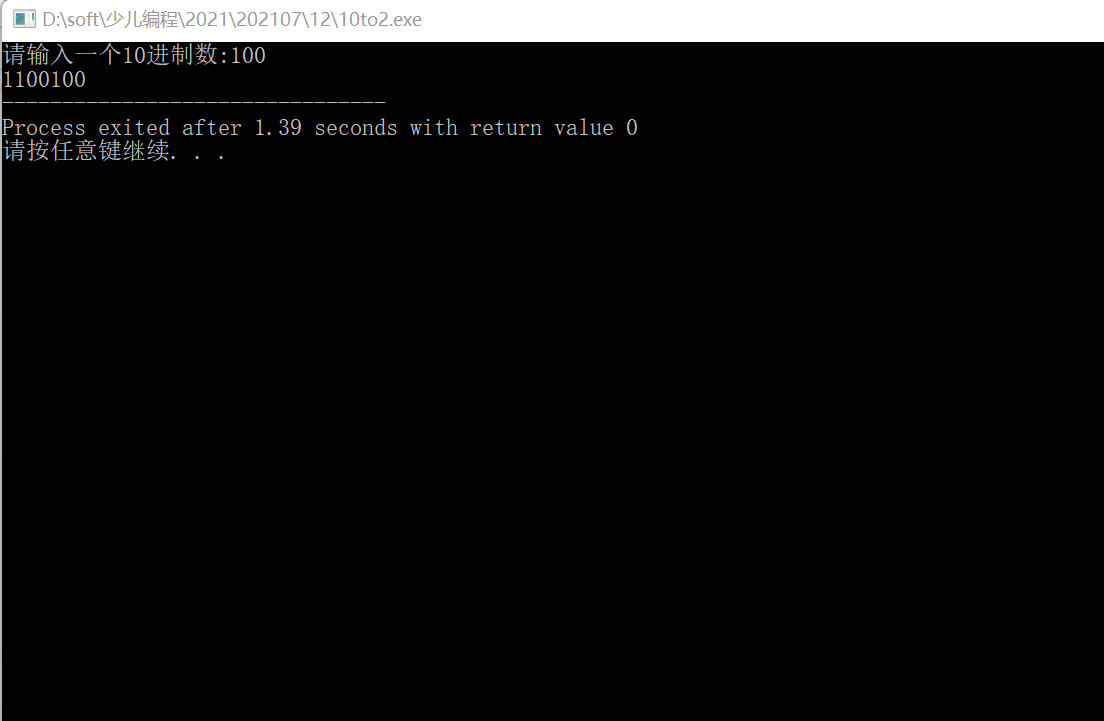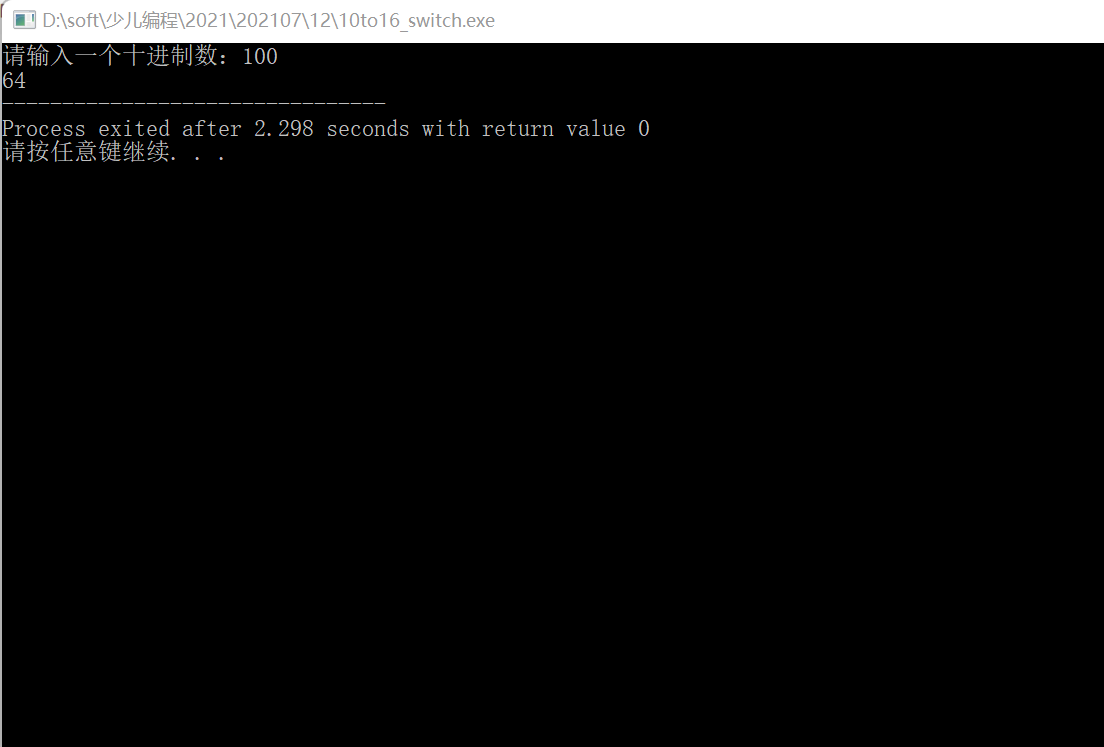本文是通过例子学习C++的第八篇,通过这个例子可以掌握进制之间的转换。
1.问题描述
在日常生活中,使用十进制进行数学运算,每个数位上的数字只能是0~9,不同位上对应的数值的权重是不同的,如数字123,个位的3代表3,十位上的数字2代表20,百位上的1代表100。
在计算机中使用二进制,每个数位上的数字只能是0~1,不同位上的数字代表的权重不同,如数字(1011)2,其中中各位1代表十进制的1,十位1代表2,千位上的1代表8,依此类推……
以此类推,常用的还有8进制,16进制;
其中16进制,每个数位上的数字只能是0~7,如(111)8。个位上的1表示1,十位上的1表示8,千位上的1表示64,依此类推……
其中16进制,每个数位上的数字只能是0~9,A、B、C、D、E、F,如(111)16。个位上的1表示1,十位上的1表示16,千位上的1表示256,依此类推……
本文将介绍各种数值之间的转换。
2.二进制和十进制之间的转换
二进制转十进制,方法是按权展开。
#include<iostream>
#include<string.h>
using namespace std;
int main(){
cout<<"请输入一个二进制数:";
char s[100];
long num=0;
long index = 1;
gets(s);
for(int t=strlen(s)-1;t>=0;t--){
//cout<<s[t]<<"--";
num += (s[t]-'0') * index;
index = index * 2;
}
cout<<num;
return 0;
}
程序运行效果如下:

十进制转二进制,方法是除2取余,倒过来即可。
#include<iostream>
#include<stack>
using namespace std;
int main(){
stack<int> s;
int n;
cout<<"请输入一个10进制数:";
cin>>n;
while(n){
s.push(n%2);
n /= 2;
}
while(! s.empty()){
cout<<s.top();
s.pop();
}
return 0;
}
程序运行效果如下:

3.十进制和十六进制的转换
下面以十进制转十六进制的两种实现方法,和十进制转二进制类似,采用除16取余,倒过来即可。
3.1 通过stack和if语句实现
#include<iostream>
#include<stack>
using namespace std;
int main(){
stack<int>s;
int n;
cin>>n;
while(n>0)
{
s.push(n%16);
n /= 16;
}
while(!s.empty()){
//cout<<s.top();
if(s.top()==10) cout<<'A';
else if(s.top()==11) cout<<'B';
else if(s.top()==12) cout<<'C';
else if(s.top()==13) cout<<'D';
else if(s.top()==14) cout<<'E';
else if(s.top()==15) cout<<'F';
else cout<<s.top();
s.pop();
}
return 0;
}
3.2 通过stack和switch语句实现
#include<iostream>
#include<stack>
using namespace std;
int main(){
stack<int>s;
int n;
cout<<"请输入一个十进制数:";
cin>>n;
while(n>0)
{
s.push(n%16);
n /= 16;
}
while(!s.empty()){
//cout<<s.top();
switch(s.top()){
case 10:
cout<<'A';
break;
case 11:
cout<<'B';
break;
case 12:
cout<<'C';
break;
case 13:
cout<<'D';
break;
case 14:
cout<<'E';
break;
case 15:
cout<<'F';
break;
default:
cout<<s.top();
}
s.pop();
}
return 0;
}
程序运行效果如下:

4.总结
本着Talk is cheap. Show me the code原则,代码实现不做过多解释。
本文从构思到完成,可谓是耗费了大量的心血。
如果您阅读本文后哪怕有一丢丢收获,请不要吝啬你手中关注和点赞的权力,谢谢!
另外,如果需要相关代码,请留言,可以提供完整源代码!